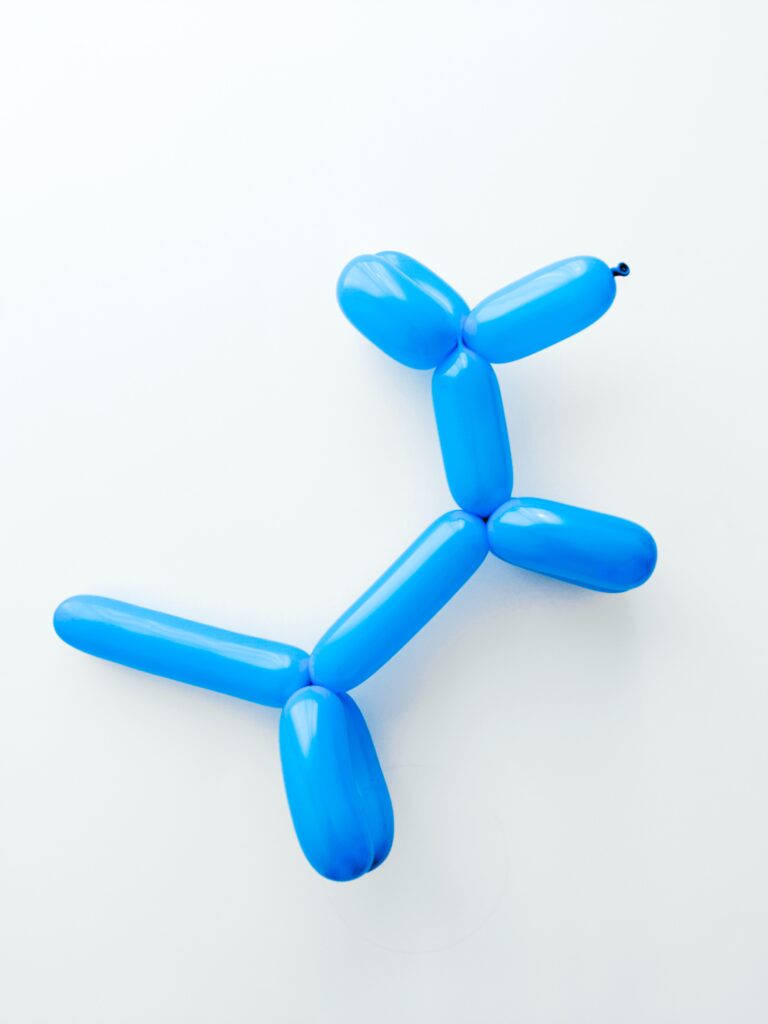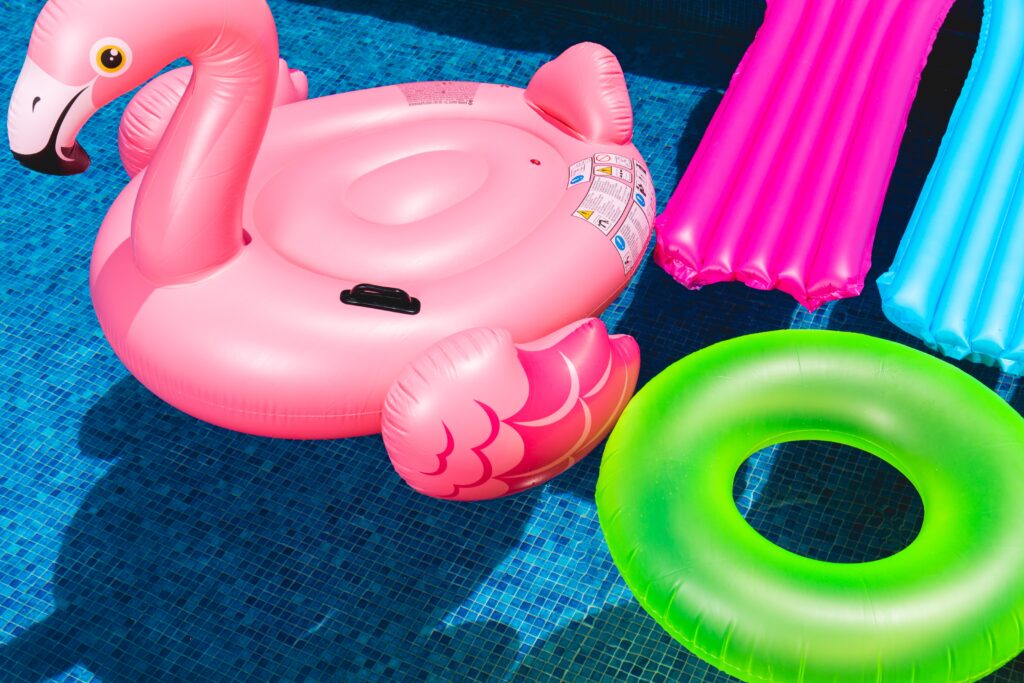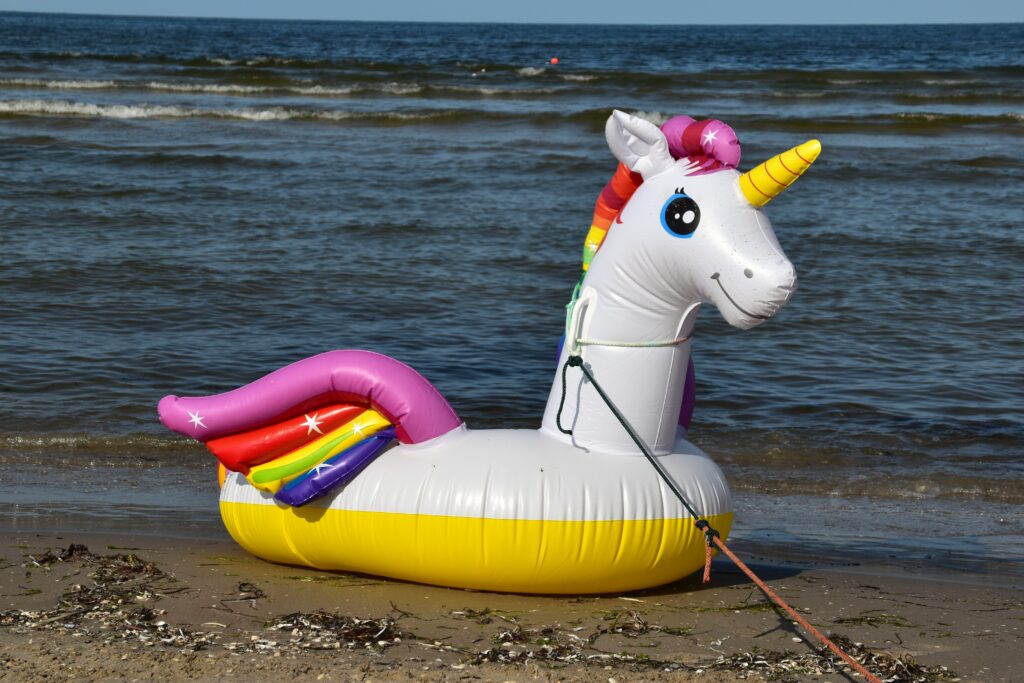
If you’re an avid kayaker, you may have wondered about the durability of inflatable kayaks. While these lightweight vessels offer convenience and portability, it’s natural to wonder if they are prone to popping. In this article, we’ll explore some valuable tips and techniques to help you keep your inflatable kayak in top condition and prevent any unwanted surprises on the water. With a few simple precautions, you can enjoy your kayaking adventures worry-free and keep those inflatable kayaks from popping. So let’s get started!
Choosing a Durable Inflatable Kayak
When it comes to choosing a durable inflatable kayak, there are several factors to consider. By taking the following aspects into account, you can ensure that you select a kayak that will withstand the test of time and provide you with countless enjoyable adventures on the water.
Consider the Material
One of the most important aspects to consider when choosing a durable inflatable kayak is the material it is made from. Opt for kayaks made from high-quality, puncture-resistant materials such as PVC or Hypalon. These materials are known for their durability and ability to withstand the elements. Additionally, ensure that the material is UV-resistant to prevent any damage from exposure to the sun’s harmful rays.
Check the Weight Capacity
Another crucial aspect to consider is the weight capacity of the kayak. You want to make sure that it can comfortably accommodate your body weight and any additional gear or equipment you plan to bring along on your kayaking trips. Exceeding the weight capacity can put unnecessary strain on the kayak and increase the risk of punctures or other damages.
Look for Reinforced Seams
The seams of an inflatable kayak play a significant role in its overall durability. Look for kayaks with reinforced seams that are double-stitched or heat-welded. These reinforced seams provide extra strength and prevent the kayak from coming apart at the seams, especially when subjected to rough waters or frequent use.
Evaluate the Manufacturing Quality
Lastly, it is important to evaluate the overall manufacturing quality of the inflatable kayak. Check for any signs of poor craftsmanship or sloppy construction. A well-manufactured kayak will have even and straight seams, symmetrical shapes, and secure attachment points for accessories such as seats or handles. Choosing a kayak from a reputable manufacturer known for producing high-quality products can significantly increase its durability and longevity.
Proper Handling and Storage
Once you have chosen a durable inflatable kayak, it is essential to handle and store it properly to maintain its longevity and prevent any unnecessary damage. By following these guidelines, you can ensure that your kayak remains in excellent condition, ready for your next kayaking adventure.
Avoid Overinflation
One of the most common causes of inflatable kayak damage is overinflation. It is crucial to follow the manufacturer’s recommended pressure guidelines and avoid overinflating your kayak. Overinflation can put excessive strain on the seams and materials, increasing the risk of punctures or ruptures. Use a pressure gauge to monitor and maintain the correct inflation level.
Protect from Extreme Temperatures
Extreme temperatures can also have a detrimental effect on the durability of your inflatable kayak. Avoid exposing it to prolonged periods of direct sunlight, as this can cause the material to become brittle and more prone to punctures. Similarly, avoid exposing your kayak to freezing temperatures, as this can lead to the expansion and contraction of the materials, potentially causing damage.
Avoid Sharp Objects
When handling your inflatable kayak, always be mindful of sharp objects that could puncture or tear the material. Keep it away from any sharp tools, keys, or other objects that could accidentally cause damage. When setting it down on the ground, ensure that the surface is free from any sharp rocks or debris that could potentially puncture the kayak.
Store in a Dry and Clean Area
Proper storage is crucial for maintaining the longevity of your inflatable kayak. After each use, thoroughly clean and dry the kayak before storing it. Any moisture or debris left on the kayak can lead to mold, mildew, or damage over time. Store your kayak in a dry and clean area, away from direct sunlight and extreme temperatures. Proper storage will help prevent unnecessary wear and tear, ensuring that your kayak remains in excellent condition for years to come.

Maintenance and Care
Regular maintenance and care are essential to keep your inflatable kayak in optimal condition. By following these maintenance tips, you can extend the lifespan of your kayak and enjoy many worry-free adventures on the water.
Regularly Inspect for Wear and Tear
Regularly inspecting your kayak for signs of wear and tear is crucial in identifying and addressing any issues early on. Check for any abrasions, punctures, or damage to the seams. If you notice any problems, promptly repair them to prevent further damage. Regular inspections will help you catch any potential issues and ensure that your kayak is always in top shape.
Clean and Dry Thoroughly After Use
After each use, it is essential to clean and dry your inflatable kayak thoroughly. Rinse off any dirt, sand, or debris from the surface of the kayak using fresh water. Pay special attention to any areas that might have come into contact with saltwater, as salt can be corrosive. Once cleaned, allow the kayak to air dry completely before storing it. Proper cleaning and drying will help protect the materials and prevent the growth of mold or mildew.
Apply Protective Spray or Wax
To further protect your inflatable kayak from the elements, consider applying a protective spray or wax. These products can help enhance the kayak’s resistance to UV rays, moisture, and the wear and tear of regular use. Follow the manufacturer’s guidelines for application and reapplication frequency to ensure optimal protection.
Use Repair Kits for Small Damages
Inevitably, small damages may occur during your kayaking adventures, such as minor punctures or small tears. To address these issues, keep a repair kit on hand specifically designed for inflatable kayaks. These kits typically include patches, adhesive, and instructions for properly repairing the damages. By promptly addressing small damages, you can prevent them from developing into larger issues that could compromise the integrity of your kayak.
Avoiding Common Causes of Popping
While inflatable kayaks are generally durable, there are certain factors that can increase the risk of popping or damaging your kayak. By being aware of these common causes and taking preventative measures, you can minimize the likelihood of accidents or damage occurring.
Beware of Sunlight and UV Rays
One of the most significant threats to the durability of inflatable kayaks is prolonged exposure to sunlight and UV rays. UV rays can weaken the material over time, making it more susceptible to punctures and ruptures. To mitigate this risk, try to avoid leaving your kayak exposed to direct sunlight for extended periods. When not in use, store your kayak in a shaded area or cover it with a UV-protected tarp.
Be Cautious with Rocky Areas
Rocky areas can pose a significant threat to inflatable kayaks. Sharp rocks or jagged surfaces can easily puncture the kayak, causing irreparable damage. When kayaking in rocky areas, exercise caution and be mindful of your surroundings. Plan your route to avoid potential hazards, and if it is unavoidable, consider using extra layers of protection, such as a kayak skirt, to mitigate the risk of punctures.
Watch out for Sharp Branches or Debris
When navigating through natural environments, such as rivers or lakes, it is crucial to be aware of sharp branches or debris in the water. A collision with a sharp object can puncture or tear your kayak, jeopardizing your safety and enjoyment. Stay vigilant and try to avoid areas with visible debris. If you encounter unavoidable obstacles, maneuver carefully to minimize the risk of damage.
Avoid Dragging the Kayak
Dragging an inflatable kayak across the ground can cause unnecessary wear and tear, potentially leading to punctures or damage to the bottom of the kayak. Whenever possible, lift and carry your kayak rather than dragging it. If dragging is unavoidable, choose a smooth and soft surface to minimize the risk of damage. Additionally, consider using a kayak cart or wheels to transport your kayak more easily without causing harm.
Do Not Overload or Misuse the Kayak
Inflatable kayaks have weight limits for a reason. Overloading your kayak can put excessive strain on the material and seams, increasing the risk of punctures or ruptures. Always adhere to the weight capacity recommended by the manufacturer. Moreover, avoid using your kayak for activities it is not designed for, such as towing or standing on it. Using your kayak within its intended purpose will help preserve its durability and ensure your safety.

Proper Inflation Techniques
Properly inflating your kayak is crucial not only for its performance on the water but also for its overall durability. By following these inflation techniques, you can ensure that your kayak remains stable, comfortable, and resilient throughout your kayaking adventures.
Do Not Use High-Pressure Pumps
While it may be tempting to use high-pressure pumps to inflate your kayak quickly, this can be detrimental to the bladder and seams. High-pressure pumps can overinflate the kayak, putting excessive strain on the material and seams. Opt for a hand or foot pump specifically designed for inflating kayaks, as these pumps provide the appropriate pressure without risking damage.
Follow Manufacturer’s Recommendations
Always refer to the manufacturer’s recommendations when it comes to inflating your kayak. Each kayak model may have specific inflation guidelines and pressure requirements. Follow these guidelines carefully to ensure optimal performance and the longevity of your kayak. Overinflating or underinflating can result in poor stability, compromised durability, and a less enjoyable kayaking experience.
Check the Pressure Gauge
Most inflatable kayaks come with a built-in pressure gauge, making it easier to monitor the inflation level. Before setting off on your kayaking adventure, double-check the pressure gauge to ensure that the kayak is properly inflated. If the pressure seems low, inflate it further to reach the recommended level. Conversely, if the pressure is too high, release some air until it reaches the appropriate level.
Fill All Chambers Evenly
Inflatable kayaks often have multiple chambers that need to be inflated separately. This design promotes stability and safety by ensuring that even if one chamber gets punctured, the kayak will remain afloat. When inflating your kayak, make sure to fill all chambers evenly and at the same pressure level. This will help maintain the kayak’s balance and structural integrity during your paddling adventures.
Using Protective Gear
When engaging in any water activity, including kayaking, it is important to prioritize your safety. Using proper protective gear can help prevent injuries and minimize the risk of accidents. Consider the following gear to enhance your safety while enjoying your inflatable kayak.
Wear a Life Jacket
Always wear a properly fitting and Coast Guard-approved life jacket or personal flotation device (PFD) while kayaking. A life jacket ensures that you can stay afloat and be visible in case of an accidental capsizing or other unforeseen events. Choose a life jacket specifically designed for kayaking, as it will provide the necessary buoyancy and ease of movement required for kayaking activities.
Use Kayak Protective Skirts
If you are kayaking in rough waters or adverse weather conditions, a kayak protective skirt can be a valuable accessory. The skirt covers the opening of the kayak cockpit, preventing water from entering and keeping you dry and protected. Additionally, a protective skirt can help keep debris, such as leaves or insects, out of your kayak, ensuring a more pleasant paddling experience.
Consider Helmet and Elbow/Knee Pads
For more extreme kayaking activities, such as whitewater kayaking or kayak surfing, wearing a helmet and protective padding for your elbows and knees is highly recommended. These protective gear pieces can help cushion any impacts or collisions, reducing the risk of injury. Prioritize your safety and consider using these protective accessories whenever engaging in higher-risk kayaking pursuits.

Repairing Small Punctures
Even with the best intentions and precautions, small punctures or tears may occur in your inflatable kayak. It is crucial to address these issues promptly to prevent further damage and maintain the kayak’s durability.
Identify the Puncture
When you suspect that your kayak has a puncture or tear, the first step is to identify its exact location. Inflate the kayak fully and submerge it in water, watching for any bubbles or air escaping from the damaged area. Mark the location of the puncture for easier repair later on.
Use Patch Kits or PVC Glue
To repair small punctures or tears, use a patch kit specifically designed for inflatable kayaks. These kits usually include patches made from compatible materials and adhesive, such as PVC glue or specialized kayak repair glue. Follow the instructions provided with the patch kit, ensuring that you apply the adhesive evenly and allow it to dry fully before reinflating the kayak.
Apply the Patch Properly
When applying the patch, ensure that the damaged area is clean and dry to maximize the effectiveness of the adhesive. Apply the adhesive to both the patch and the area around the puncture or tear, and press the patch firmly onto the damaged area. Smooth out any air bubbles or wrinkles, and allow the adhesive to cure completely according to the manufacturer’s instructions.
Seeking Professional Help
In some cases, it may be best to seek professional help for repairing your inflatable kayak. If the damage is severe or you are unsure about your repair skills, reaching out to the manufacturer or a specialized inflatable kayak repair service can provide peace of mind and ensure proper repair.
Consult Manufacturer or Supplier
If your kayak is still under warranty or you have specific concerns about the damage, it is advisable to consult the manufacturer or supplier. They can provide guidance on the repair process, offer recommendations for repair professionals, or advise on any warranty coverage that may apply.
Contact Inflatable Kayak Repair Services
For more complex repairs or if you prefer to have an expert handle the repair process, consider contacting inflatable kayak repair services. These professionals have experience in repairing different types of damages and can ensure that your kayak is restored to its original condition. Research and choose reputable repair services that specialize in inflatable kayaks to obtain the best results.
Educate Yourself about Emergency Procedures
While inflatable kayaks are generally safe and stable, it is essential to educate yourself about emergency procedures and basic safety skills. Knowing what to do in unexpected situations can make a significant difference in ensuring your safety and the safety of others.
Learn Kayaking Techniques
Before embarking on your kayaking adventures, take the time to learn and practice essential kayaking techniques. Familiarize yourself with proper paddling techniques, steering methods, and different strokes. Knowing how to maneuver your kayak effectively will not only enhance your experience but also provide you with more control and confidence on the water.
Understand How to Evacuate from a Capsized Kayak
Capsizing can happen even to experienced kayakers, so it is crucial to know how to safely and efficiently evacuate from a flipped kayak. Practice flipping your kayak intentionally in a controlled environment and practice techniques such as the wet exit to ensure that you can quickly and safely exit the kayak in an emergency.
Master Basic First Aid Skills
Accidents or injuries can occur in any outdoor activity, including kayaking. Having a basic understanding of first aid skills can be invaluable in managing minor injuries or assisting others in distress until professional help arrives. Enroll in a first aid course that includes modules on water-related injuries or obtain a first aid guide specific to outdoor activities to ensure you are prepared for any potential emergencies.
Conclusion
Choosing a durable inflatable kayak provides you with the freedom to explore various bodies of water and enjoy countless adventures. By considering the material, weight capacity, reinforced seams, and manufacturing quality, you can ensure that your kayak stands up to the test of time. Proper handling and storage, regular maintenance and care, and avoiding common causes of popping further enhance the kayak’s durability and lifespan. Following the proper inflation techniques, using protective gear, and addressing small punctures promptly contribute to your safety and the preservation of your kayak. In case of severe damage, seeking professional help is always an option. Finally, educating yourself about emergency procedures, mastering kayaking techniques, and understanding basic first aid skills will ensure that you can enjoy your inflatable kayak with confidence and peace of mind. By following these guidelines and recommendations, you can maximize the durability of your inflatable kayak and create lasting memories on the water.








